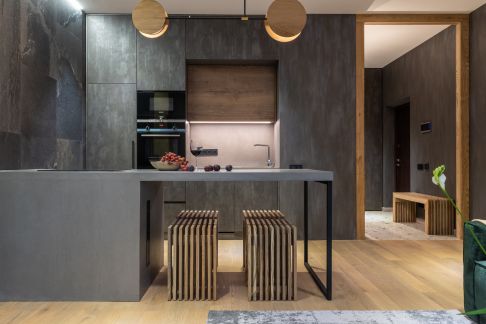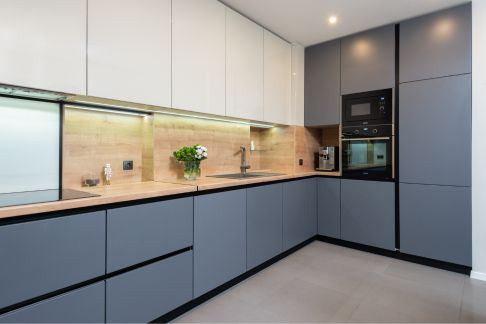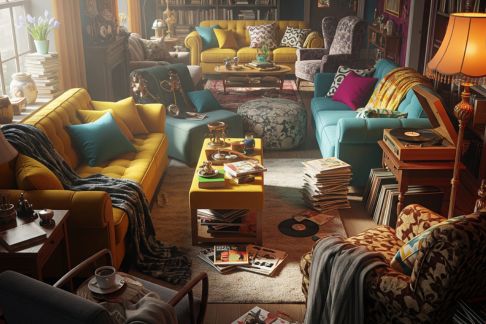Introduction
In the ever-evolving world of interior design, trends may come and go, but some styles have a way of cycling back into relevance—stronger and more stylish than ever. One such enduring aesthetic is pattern drenching: the artful layering of a single pattern across an entire room, from walls to ceilings to furniture. Far from being a new phenomenon, this approach traces its roots back centuries and is now being reimagined by top designers to create immersive, visually captivating spaces.
While today’s buzzword might be color drenching, its more sophisticated older sibling—pattern drenching—has a deep historical pedigree. Often described as “à la Française,” the style first gained prominence during the reign of Louis XIV and was later immortalized by iconic tastemakers like Marie Antoinette at the Petit Trianon and Joséphine de Beauharnais at Château de Malmaison. Fast-forward through centuries of design, and the approach has been championed by greats like Elsie de Wolfe, Sybil Colefax, and John Fowler, who weren’t afraid to turn a room into a canvas of repeating motifs.
Why Designers Love It
Modern designers are embracing pattern drenching not just for its drama, but for its architectural power. Ken Fulk, a San Francisco-based designer known for his bold storytelling through interiors, used a classic William Morris print across every surface of a home library to make the compact room feel more expansive and regal. “I tend to use more complex patterns on large surfaces where the scale and repeat can truly be appreciated,” Fulk explains.
Similarly, Birmingham-based designer Caroline Gidiere highlights how all-over pattern can play visual tricks: making oversized rooms feel cozy or tiny rooms feel infinite by blurring spatial boundaries. “When pattern covers everything, it becomes almost tonal. The eye stops distinguishing between objects and surfaces—it’s incredibly unifying,” she notes.
Pattern as Problem-Solver
One of pattern drenching’s secret superpowers? Its ability to conceal imperfections. From awkward nooks to underwhelming architecture, enveloping a space in a single fabric or wallpaper can transform design flaws into focal points. Chicago-based designer Wendy Labrum applied this approach to a tricky loft space by covering the angled roofline and walls in the same stripe, even crafting a matching daybed. Her advice: “If you love a fabric, back it with paper and put it on your walls—it changes everything.”
Labrum also used a neutral gingham check across a guest room’s walls, bed, and window treatments to enlarge the perception of space. By layering a bold print with modern accents, like a contemporary sconce, she created harmony with contrast.
Luxury in Repetition
While the look may seem maximalist, successful pattern drenching actually requires a careful, restrained hand. “Using one hero fabric throughout a room demands precision,” says Houston-based designer Paloma Contreras, who applied a single Brunschwig & Fils print across the bed, chairs, and benches in her bedroom. “It’s harder than mixing patterns because you can’t rely on variety. The shapes, lines, and details have to do all the work.”
Katie Rosenfeld, a Boston-based designer, agrees. “Without thoughtful structure, it can feel like camouflage. But done right, it’s a masterstroke.”
The Making of an Iconic Room
Some of the most memorable interiors in design history share this fearless layering philosophy. Think Gloria Vanderbilt’s pattern-drenched bedroom in Southampton—still relevant decades later. Designer Alexandra Resor recreated this timeless approach using 107 yards of a lavender Raoul textile across drapes, bedding, and upholstery. The vertical orientation of the pattern added sophistication without overwhelming the space.
Gidiere followed a similar ethos, drawing inspiration from Lee Radziwill’s Paris apartment to transform a client’s sitting room. Her choice of Le Manach’s Mikado print, rendered in blue, turned the space into a refined retreat.

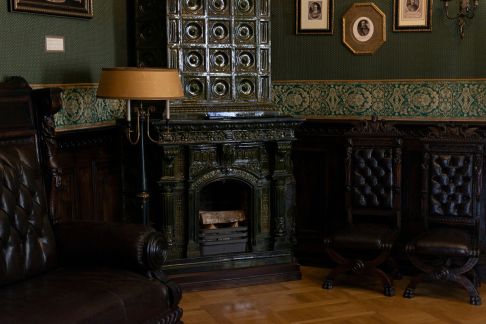
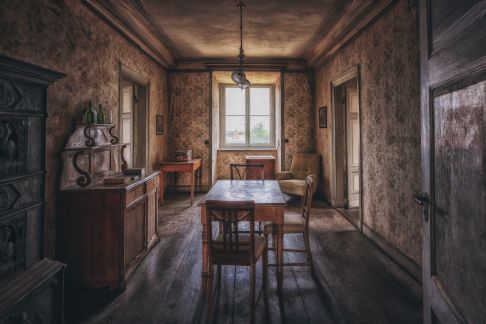
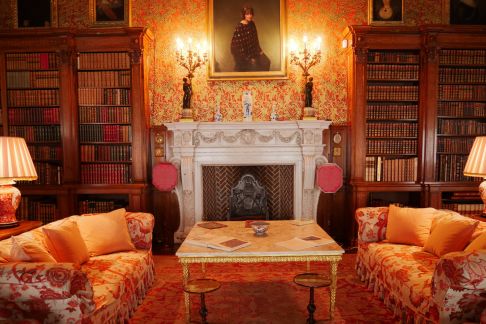
From Cocooning to Statement-Making
Seattle-based interior designer Heidi Caillier champions pattern drenching for bedrooms in particular. “It creates a cocoon-like ambiance that’s perfect for rest and relaxation,” she says. In one Brooklyn project, she wrapped an entire room in a warm Rosa Bernal floral, using the same fabric on the walls, bed, curtains, and chairs. The result? A peaceful oasis in the heart of the city.
Likewise, Chicago designer Heidi Avedisian embraced total immersion in a tented sunroom, using 181 yards of Liberty of London fabric on the walls, ceiling, and furnishings. With three walls of windows and whimsical accents like checkered pavers and rattan furniture, the space balances boldness with elegance.
Conclusion: Bold Yet Enduring
Pattern drenching may seem like a bold move, but for those who dare, the payoff is immense. It’s a technique that transforms ordinary rooms into iconic spaces—rich in history, cohesion, and personality. Whether you’re disguising design challenges or crafting a visually rich environment, this time-honored approach proves that sometimes, more really is more.

